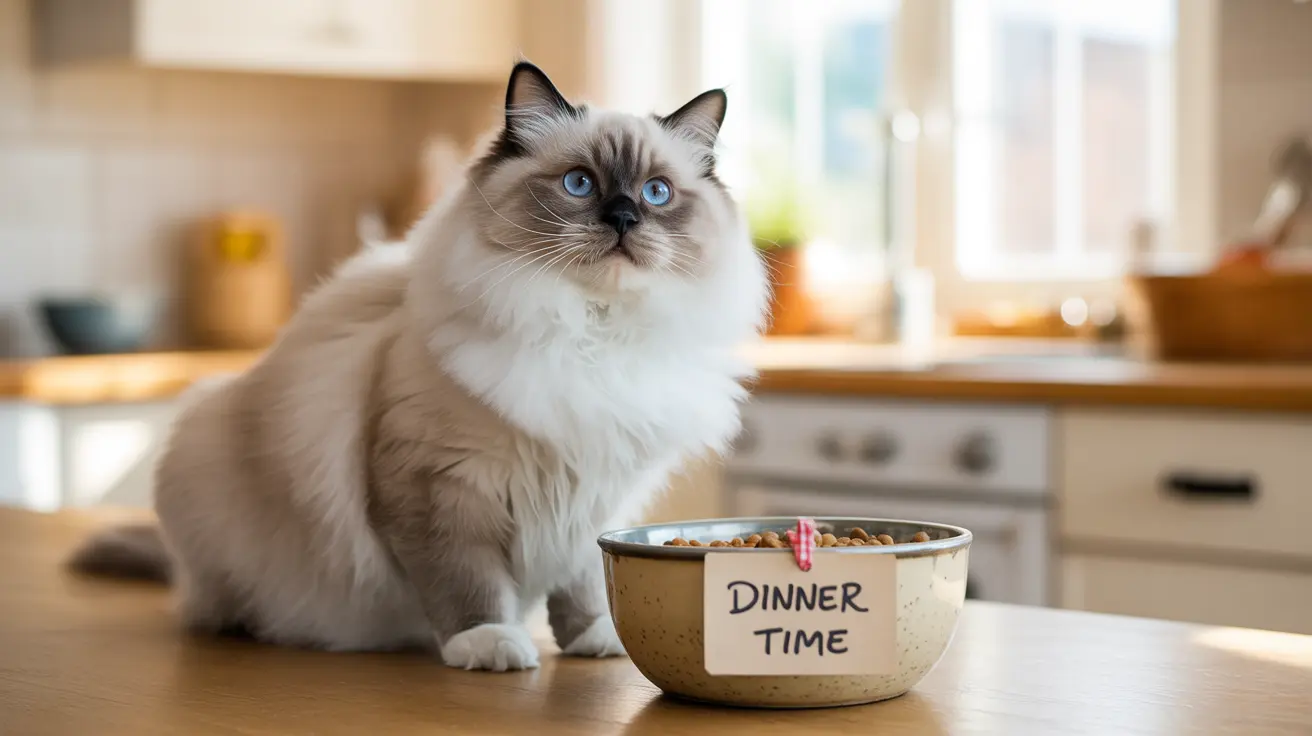As cat owners, we've all experienced those persistent meows and pleading eyes around mealtime. But determining whether your feline friend is genuinely hungry or simply engaging in attention-seeking behavior can be surprisingly challenging. Understanding the difference is crucial for maintaining your cat's health and preventing obesity or nutritional issues.
In this comprehensive guide, we'll explore the telltale signs of true hunger, help you distinguish between genuine need and habitual begging, and provide expert-backed strategies for managing your cat's feeding behaviors effectively.
Understanding Normal Cat Feeding Behavior
Cats are natural grazers, typically preferring multiple small meals throughout the day. In the wild, they might hunt and eat 8-12 times daily. This biological programming can translate into frequent food-seeking behaviors in domestic cats, even when they're well-fed.
Understanding this natural inclination helps explain why your cat might seem constantly hungry, even when they've eaten recently. However, it's essential to distinguish between natural feeding patterns and problematic begging behaviors.
Common Signs of True Hunger in Cats
Physical Indicators
Genuinely hungry cats often display specific physical signs:
- Visible weight loss over time
- Decreased energy levels
- Dull, unkempt coat
- Reduced grooming behavior
- Lethargy or weakness
Behavioral Signs
Watch for these legitimate hunger-related behaviors:
- Eating food completely when offered
- Maintaining normal eating speed
- Showing interest in regular cat food rather than just treats
- Displaying consistent energy levels between meals
Identifying Attention-Seeking Begging Behavior
Begging behavior often manifests differently from true hunger. Common signs include:
- Excessive meowing specifically around humans
- Refusing regular food while begging for treats
- Eating, then immediately asking for more
- Following owners only during food preparation
- Increased begging after receiving attention for food-seeking behavior
Medical Conditions That Increase Appetite
Sometimes, excessive hunger or begging can signal underlying health issues:
- Hyperthyroidism
- Diabetes
- Intestinal parasites
- Inflammatory bowel disease
- Certain medications' side effects
If your cat shows sudden changes in appetite or begging behavior, especially combined with other symptoms, consult your veterinarian promptly.
Managing Food-Seeking Behaviors
Establish a Feeding Schedule
Create and maintain consistent meal times to help regulate your cat's expectations and reduce begging:
- Feed smaller portions more frequently
- Use automatic feeders to maintain consistency
- Measure portions carefully to prevent overfeeding
Environmental Enrichment
Address potential boredom-related begging through:
- Interactive toys and play sessions
- Food puzzle toys
- Climbing structures and window perches
- Regular attention and playtime
Frequently Asked Questions
How can I tell if my cat is truly hungry or just begging for attention or treats?
Look for physical signs like weight loss, decreased energy, and unkempt appearance. Truly hungry cats will eat their regular food eagerly, while begging cats may be selective and only interested in treats.
What specific behaviors indicate my cat is hungry versus being greedy or habitually begging?
Genuine hunger typically involves eating food completely when offered, maintaining normal eating speeds, and showing consistent interest in regular cat food. Greedy or habitual begging often includes excessive vocalization, refusing regular food, and begging immediately after meals.
When should I be concerned that my cat's constant begging might signal a medical issue?
Consult a veterinarian if begging behavior is accompanied by weight changes, increased thirst, changes in litter box habits, or unusual lethargy. Sudden increases in appetite can indicate conditions like hyperthyroidism or diabetes.
How can I manage my cat's begging behavior without encouraging overeating or obesity?
Establish regular feeding times, use measured portions, avoid giving in to begging, and provide environmental enrichment through toys and play. Consider using puzzle feeders to slow eating and provide mental stimulation.
What signs show that increased appetite in my cat may be caused by health problems like hyperthyroidism or diabetes?
Watch for increased appetite combined with weight loss, excessive thirst, frequent urination, changes in energy levels, or behavioral changes. These symptoms warrant immediate veterinary attention.
Remember, understanding your cat's genuine needs versus learned behaviors is key to maintaining their health and happiness. When in doubt, always consult with your veterinarian to ensure your cat's nutritional needs are being met appropriately.






